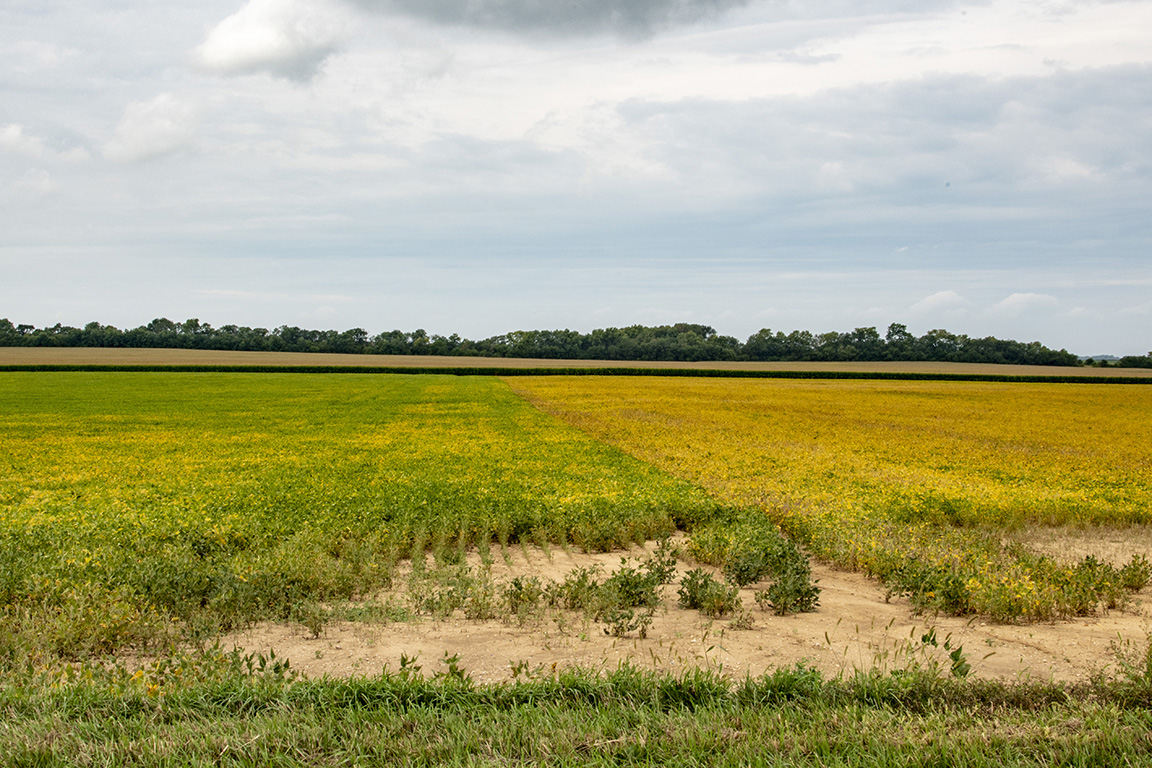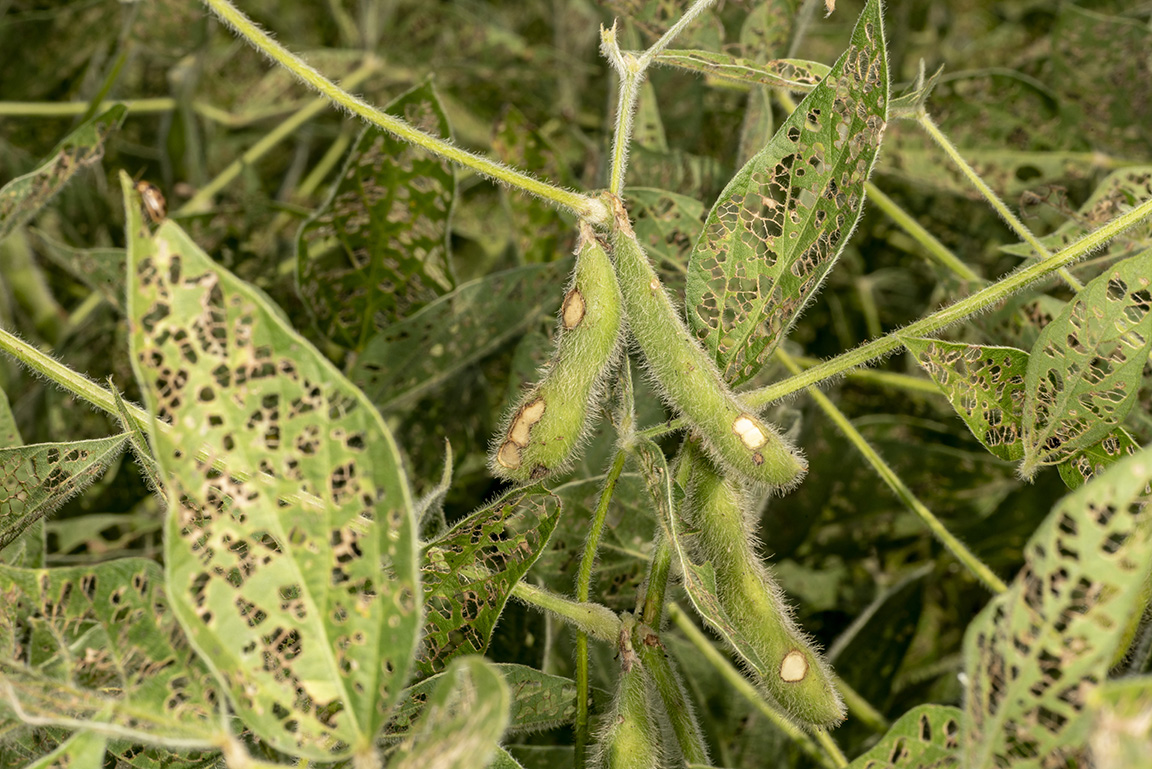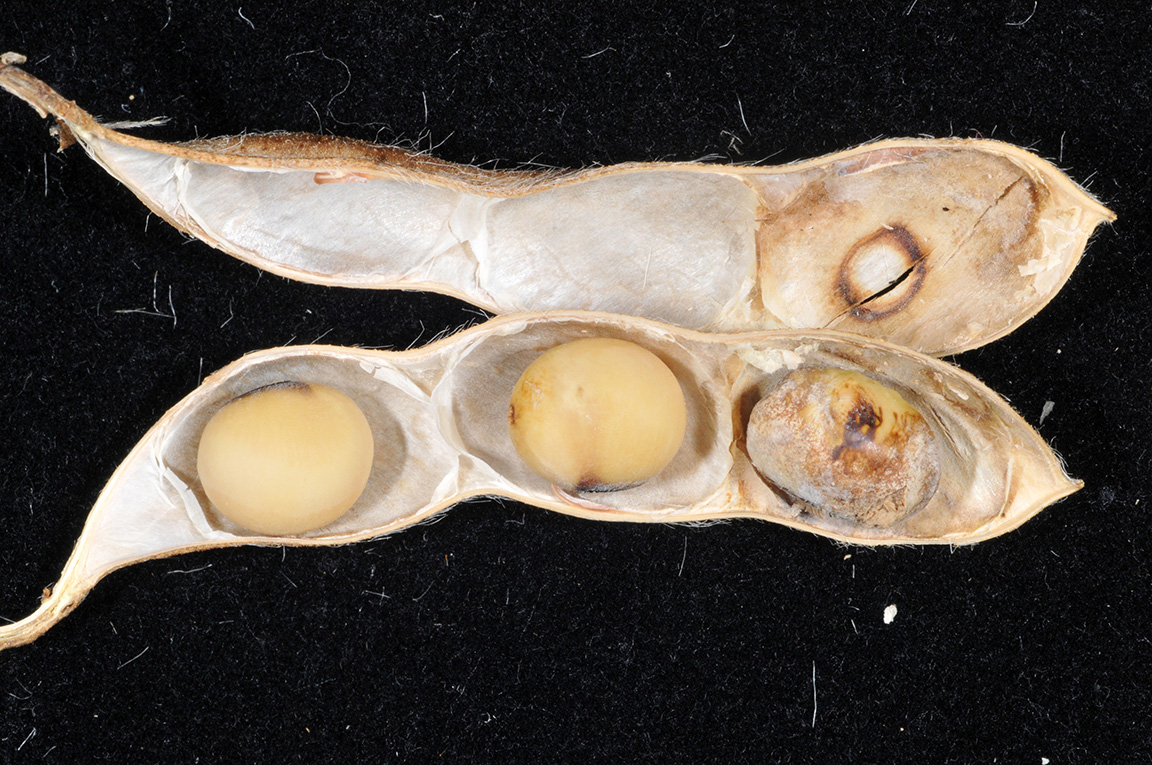Though Japanese beetle numbers and their defoliation to soybean typically get lots of mid-season attention, their pressures seemed to be lower this year. In contrast, we’ve noticed bean leaf beetle coming on strong late this summer. Don’t give up scouting yet!
Soybean fields throughout the state are beginning their annual color changes, deep green to golden yellow. Those soybean fields that remain green, especially those that are behind neighboring fields in development, should be monitored for bean leaf beetle. Remember that crops planted atypically early or late in a region, can sometimes be magnets for insect pests, depending on time of year. Bean leaf beetles scar the surface of pods, but only occasionally feed through the pod to the developing beans. The problems come later, during pod maturation. At that time, this scar often cracks as it dries out, leaving an entry hole for moisture and airborne plant pathogens (primarily fungi and yeasts) that may cause discolored, moldy, or shriveled beans.

Bean leaf beetle will relocate to later maturing fields for green leaves and pods. (Photo Credit: John Obermeyer)
It is important for pest managers to be able to predict whether economic damage will occur based on the numbers of beetles that are present now and the stage of pod development (i.e., green, yellow, yellow-brown, or brown pods). Once the pods turn yellow to yellow-brown, they become unattractive to hungry beetles and less susceptible to damage (this is also part of the reason behind the movement from drying beans to still-green fields). Control is normally not warranted when pods are yellow or brown.

Bean leaf beetle defoliation and pod scarring on R5 plants, well over treatment threshold. (Photo Credit: John Obermeyer)

Mature soybean pod split open to reveal the previous scarring that cracked, leading to a moldy bean. (Photo Credit: John Obermeyer)
For leaf feeding, 10% or greater defoliation in soybean growth stages R3-early R5 should be considered for treatment if beetles are still active – remember that sprays must contact beetles to have efficacy. If they have departed the field, it’s because it is no longer attractive and they will not likely return. For reference, this is a pretty high level of defoliation for this time in the year, and quite uncommon historically. For growth stages R6, scout bean fields for pod damage: randomly select 2 plants in each of 5 areas of the field and count the number of pods per plant and the number that show damage (i.e., 10 total plants). Calculate the percentage of damaged pods per plant for the field as a whole. Note whether the pods are green, beginning to turn yellow, or are yellow/brown. You should also determine the number of beetles per sweep using an insect sweep net. Take 5 sets of 20 sweeps in the field. Determine the number of bean leaf beetles per sweep.
| Use the following table to determine when a treatment may be necessary | |||
|---|---|---|---|
| No. of beetles per sweep in 30 inch (7 inch) row spacing | |||
| Pod Injury Level | Less than 4(3) | 4(3) to 7(5) | More than 7(5) |
| 0 to 8% | Discontinue sampling | Sample again in 5 days | Cool (preventive) if pods still green |
| 8 to 12% | Sample again in 5 days | Control if pods are still green | Control if pods are green to yellow |
| Over 12% | Control if pods are still green and beetles are present | Control unless pods are completely dry | Control unless pods are completely dry |
| Table modified from the University of Illinois. | |||
If a treatment is deemed justified, be mindful of the insecticide’s pre-harvest interval (PHI) which is stated on the label, this is the number of days before one can legally harvest those soybeans. It varies widely, with some recommended insecticides having a PHI of up to 60 days, which will likely be too long for some planned harvest windows. Recommended insecticides and their PHI’s can be found HERE.
VIDEO: Consideration for Bean Leaf Beetle Feeding in Late-Maturing Soybean – (Christian Krupke and John Obermeyer)


